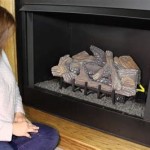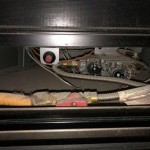How To Install Ledger Stone Over Brick Fireplace
Installing ledger stone over a brick fireplace can dramatically enhance the aesthetic appeal of a living space, transforming a traditional brick facade into a more modern and sophisticated focal point. This process, while rewarding, requires careful planning, preparation, and execution to ensure a lasting and visually appealing result. This article outlines the necessary steps involved in successfully installing ledger stone over a brick fireplace, providing detailed instructions and considerations for each stage of the project.
The project begins with gathering the necessary materials and tools. This includes ledger stone, thin-set mortar specifically designed for stone applications, a notched trowel, a wet saw or angle grinder with a diamond blade for cutting stone, a level, a measuring tape, a pencil or marker, safety glasses, work gloves, a dust mask, a bucket for mixing mortar, a sponge, and a margin trowel. Depending on the condition of the brick fireplace, additional materials like a wire brush, concrete cleaner, or concrete patch may be required.
Proper preparation is paramount for a successful ledger stone installation. This involves thoroughly cleaning the brick surface, ensuring it is structurally sound, and applying a scratch coat of mortar. Taking the time to prepare the surface correctly will ensure the ledger stone adheres properly and the finished project looks professional.
The actual installation of the ledger stone involves carefully applying mortar to the back of each stone and pressing it firmly against the brick surface. Maintaining consistent spacing and alignment is crucial for achieving a visually appealing and professional-looking result. Grouting the spaces between the stones, once the mortar has cured, further enhances the finished look and provides additional stability.
Key Point 1: Preparing the Brick Fireplace
Before installing ledger stone, the brick fireplace must be thoroughly prepared. The existing brick surface needs to be clean, stable, and properly primed to ensure optimal adhesion of the thin-set mortar and ledger stone. This process involves several crucial steps, starting with a visual inspection.
Begin by inspecting the brick surface for any loose, cracked, or damaged bricks. Any compromised bricks should be repaired or replaced before proceeding. Use a chisel and hammer to carefully remove loose or damaged bricks, and then apply concrete patch or mortar to fill the voids. Allow the patch to cure completely according to the manufacturer's instructions before moving on. This step ensures a solid and stable base for the ledger stone installation.
Next, thoroughly clean the brick surface to remove any dirt, dust, grease, or soot. Use a wire brush and a concrete cleaner to scrub the brick, paying close attention to any areas with stubborn stains. Rinse the surface with clean water and allow it to dry completely. A clean surface is essential for proper mortar adhesion.
In some cases, the brick surface may be painted or sealed. If so, the paint or sealant must be removed before installing ledger stone. Use a paint stripper or a wire brush to remove the coating, following the manufacturer's instructions carefully. Ensure all residue is removed and the brick surface is clean and dry before proceeding.
Finally, apply a scratch coat of thin-set mortar to the brick surface. This is a thin layer of mortar that helps to create a better bond between the brick and the ledger stone. Use a notched trowel to apply the mortar evenly, creating ridges that will provide a mechanical key for the ledger stone. Allow the scratch coat to dry for at least 24 hours before installing the ledger stone. The scratch coat significantly improves the bond strength and ensures a long-lasting installation.
Consider the brick’s porosity. Some brick types are highly porous and will quickly absorb moisture from the thin-set mortar, potentially weakening the bond. In such cases, dampen the brick surface with a sponge before applying the scratch coat. This will help to regulate the moisture content and ensure proper hydration of the mortar.
Key Point 2: Cutting and Installing the Ledger Stone
Once the brick fireplace is properly prepared, the next step is to cut and install the ledger stone. This process requires precision and attention to detail to ensure a visually appealing and structurally sound installation. Proper cutting techniques and careful placement of the stones are essential for achieving a professional-looking result.
Begin by laying out the ledger stone pieces on the floor to plan the layout. This will help to determine the placement of each piece and identify any stones that need to be cut. Use a measuring tape and a pencil or marker to mark the stones for cutting. Consider the overall pattern and aesthetic you are trying to achieve when planning the layout. Variations in color and texture exist in natural stone, so mix and match pieces to create a visually pleasing design.
Use a wet saw or an angle grinder with a diamond blade to cut the ledger stone. When using a wet saw, ensure a steady flow of water to keep the blade cool and minimize dust. When using an angle grinder, wear safety glasses and a dust mask to protect yourself from debris. Cut the stones carefully, following the marked lines. Take your time and make multiple shallow cuts rather than trying to cut all the way through in one pass. This will help to prevent chipping and ensure a clean, accurate cut.
Apply thin-set mortar to the back of each ledger stone using a notched trowel. Apply enough mortar to create a strong bond, but avoid applying too much, as this can cause the mortar to squeeze out between the stones. The type of notched trowel will depend on the specific ledger stone being used and the manufacturer’s recommendations.
Press the ledger stone firmly against the brick surface, aligning it with the planned layout. Use a level to ensure that the stones are plumb and level. If necessary, use shims to adjust the level of the stones. Maintain consistent spacing between the stones to create a uniform look. Spacing can be achieved with plastic spacers designed for tile and stone installation.
Work from the bottom up, installing one row of ledger stone at a time. Allow the mortar to cure slightly before installing the next row. This will help to prevent the stones from sliding or shifting. Periodically check the alignment and level of the stones to ensure that they are staying in place. Remove any excess mortar that squeezes out between the stones using a margin trowel. This prevents hardened mortar from obscuring the stone’s surface.
Key Point 3: Grouting and Finishing Touches
After the mortar has cured, the next step is to grout the spaces between the ledger stones. Grouting fills the gaps between the stones, providing additional stability and enhancing the overall aesthetic appeal of the fireplace. Proper grouting techniques are essential for achieving a professional-looking finish. Following the grouting, final cleaning and sealing can add to the overall appearance and longevity of the project.
Choose a grout color that complements the ledger stone. Consider the overall design and aesthetic you are trying to achieve when selecting the grout color. A contrasting grout color can highlight the individual stones, while a matching grout color can create a more seamless look. Consult with a professional at a home improvement store for guidance on selecting the best grout type and color for the specific ledger stone used.
Mix the grout according to the manufacturer's instructions. Add water gradually until the grout reaches a smooth, consistent consistency. Avoid adding too much water, as this can weaken the grout. Ensure thorough mixing to eliminate any lumps or dry powder.
Apply the grout to the spaces between the ledger stones using a grout float. Press the grout firmly into the gaps, ensuring that they are completely filled. Work in small sections, and remove any excess grout from the surface of the stones using the grout float. Hold the float at a 45-degree angle and scrape it across the surface of the stones. Avoid pressing too hard, as this can damage the stones.
Allow the grout to set for a few minutes, and then use a damp sponge to clean the surface of the stones. Wring out the sponge frequently to avoid spreading the grout around. Rinse the sponge in clean water and continue wiping the stones until they are clean. Remove any remaining grout haze with a clean, dry cloth. A grout sponge with rounded edges can help prevent gouging or scratching the ledger stone during the cleaning process.
Once the grout has cured completely, apply a sealer to protect the ledger stone. Sealing the stone will help to prevent staining and make it easier to clean. Choose a sealer that is specifically designed for natural stone. Apply the sealer according to the manufacturer's instructions. Typically, this involves applying one or two coats of sealer with a brush or roller. Allow the sealer to dry completely before using the fireplace.
Inspect the finished fireplace for any imperfections. Touch up any areas as needed. Clean the surrounding area and remove any debris. A well-executed ledger stone installation not only enhances the beauty of the fireplace but also adds value to the home.

Installing Stone Veneer Over A Brick Fireplace Grand River
First Timer Looking To Put Stacked Slate Over Brick Fireplace Ceramic Tile Advice Forums John Bridge

Transform Your Home Stone Veneer Over Brick Fireplace Guide

Can Stone Veneer Be Applied Over Brick Deluca Masonry Construction

Fireplace Facelift Using Natural Stone Veneer

Faux Stone Fireplace Surround Over Old Brick Genstone

Diy Stacked Stone Fireplaces On A Budget Msi Blog

How To Diy A Stacked Stone Feature Over Existing Brick
Stacked Stone Over Brick Fireplace Ceramic Tile Advice Forums John Bridge

Install Stone Veneers Over Old Brick Fireplace Diy
Related Posts








